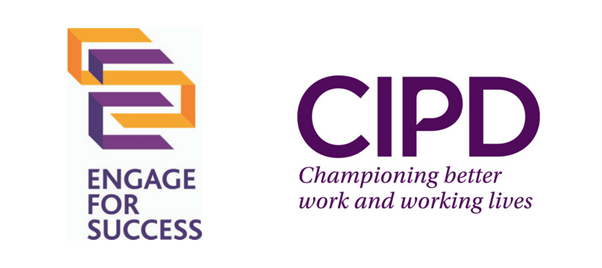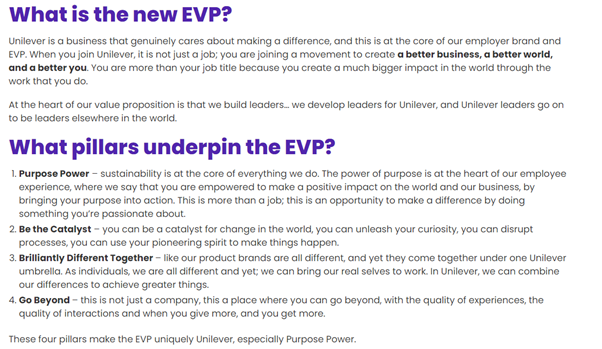Employee Experience, Employee Engagement, Employer Brand, EVP: What’s the Difference?
And does it even matter?
If you’re interested in people management in any way, you’ll come across many related and overlapping terms such as Culture, Employee Experience, Employee Engagement, Employee Value Proposition (EVP), and Employer Brand. Frankly, this much HR terminology can be confusing, irritating and off-putting. Are they all the same thing, and does it even matter?
Let’s take a closer look.
Employee Engagement
Employee Engagement is on one hand one of the most popular topics in HR, and on the other it’s one of the most confusing. This is because there are so many definitions and models, many of which have been developed by consulting firms and engagement survey providers. This means that they generally haven’t been tested and scrutinised in the way that academic models are.
What is Employee Engagement?
A simple definition of Employee Engagement is that it’s the emotional and behavioural commitment of an employee to their work and success of the organisation. This, at least, is typically what’s measured in engagement surveys.
But there’s a huge disconnect between the commercial world of employee surveys and the academic world that conducts published, peer-reviewed research. Since the first use of the term Employee Engagement, commercial survey providers have focused on a definition that centers on the relationship between the employee and the organisation (and to some degree their work), while most academic research focuses on the relationship between the employee and their work.
You might not care about these differences. But they do matter — because we tend to look to academic research to build robust frameworks and models that give us confidence that what we’re measuring is really what we think we are, and that we’re doing it accurately.
CIPD’s Definition of Employee Engagement
The CIPD, in response to the wide range of definitions and models of Employee Engagement, reviewed the available evidence and suggest treating Employee Engagement as:
“An umbrella term describing a broad area of people strategy, and referring to narrower constructs – such as work engagement or organisational commitment – when you need to be more specific”.
Engage for Success’ Definition
The influential Engage for Success think tank (that grew out of the UK Government-sponsored Engaging for Success or ‘MacLeod’ Report) also take a broad brush approach, defining employee engagement as:
“A workplace approach resulting in the right conditions for all members of an organisation to give of their best each day, committed to their organisation’s goals and values, motivated to contribute to organisational success, with an enhanced sense of their own well-being”.
The CIPD and Engage for Success both offer broad definitions of employee engagement:

The Academic Perspective
In a review of the research on Employee Engagement, Bailey et al (2017) suggested that the various definitions of engagement can be grouped under six main headings. Of these, the most widely researched are focused more on:
Personal (or role) engagement – e.g. Kahn, 1990
Work engagement – e.g. Schaufeli et al, 2002
… and not on the attitude or commitment of the employee to the organisation.
Despite these challenges, Employee Engagement is considered to be important and useful. It’s important, however, not to accept models and measures of engagement without question. Because of these challenges, our point of view is similar to the CIPD’s: we see Employee Engagement as something broad and holistic — hence the term "People Experience".
Employer Brand Another widely used term in HR is Employer Brand. But..
Employer Brand
Another widely used term in HR is Employer Brand. But…
What is an Employer Brand?
According to the CIPD, Employer Branding is:
“The way in which organisations differentiate themselves in the labour market, enabling them to recruit, retain and engage the right people.”
So, it’s an image that an organisation deliberately cultivates and projects – though like other brands, to be effective the promise needs to match the reality.
Although a strong Employer Brand should, in principle, lead to Employee Engagement, its aim is slightly different. Just as great branding can add economic value to an otherwise standard product, a great Employer Brand should help organisations:
- Compete for talent
- Reduce the premium they pay to attract people
- Lower recruitment costs
- Increase retention
Check out Unilever’s current Employer Brand: You are more than your job title – centred around being part of “the world’s most successful, purpose-led business”.
Employee Value Proposition
So, what is an EVP?
The Employee Value Proposition (EVP), according to the CIPD:
“Describes what an organisation stands for, requires and offers as an employer.”
It’s also referred to as “the deal” – just like a business’s marketing value proposition, which outlines what the customer gets for their money, the EVP defines:
- What employees can expect from their employer (in terms of reward, benefits, development, etc.)
- What the employer expects in return
This can be defined at an overall level or tailored for different segments. It’s a two-way deal, closely related to the psychological contract.
While the EVP and Employer Brand may share the same aim, the EVP is more internally focused. It’s about clarity and honesty:
“We can’t pay market-leading salaries, but we can offer…”
An EVP requires understanding both your employees' and your business’s needs. Some describe it in terms of:
- Development
- Compensation and benefits
- Culture
- Others focus on the emotional or experiential aspects.
But to be effective, these components have to come together.
Unilever’s EVP, described by Anuradha Razdan (VP HR) on the Linkhumans podcast, develops the purpose-led theme further:

Employee Experience (EX)
Last but not least: Employee Experience (EX). This term has exploded in recent years.
Josh Bersin, HR industry analyst, wrote: “Employee Experience has become a crusade. Every HR and IT department is focused on it, and the marketplace has exploded.”
What is Employee Experience?
Employee Experience refers to the deliberate design of the interactions that an employee has with their employer, and how those feel, over the course of their employment.
We prefer the term ‘People Experience’, for two reasons:
- Not all of your ‘people’ are employees – you may also manage contractors, volunteers, etc.
- The word employee implies a “them and us” mentality, excluding management.
In 2018, the CIPD removed Employee Engagement from its profession map and replaced it with Employee Experience, saying:
“Employee experience is about creating a great work environment for people. It involves understanding the role that trust plays in the employment relationship and making sure people are listened to and have a voice in issues that impact them.”
While the EVP is about articulating the deal, and the Employer Brand is about presenting your best self, EX is about deliberately designing the experience itself.
Employee Experience (EX) Last but not least, Employee Experience (EX) is a term that has exploded in recent years. Josh Bersin, HR industry analyst wrote recently that “Employee Experience has become a crusade. Every HR and IT department is focused on it, and the marketplace has exploded.”
Are They Fundamentally Different?
So what?
For us, it ALL boils down to ‘experience’.
Employee Engagement, Employer Brand, EVP, and Employee Experience — these terms are often used synonymously because there's so much overlap. What’s common to all of them?
- Understanding what’s important to your employees
- Knowing what motivates them and how they feel
- Doing this in the unique context of your organisation
Each of these has its place, but in our view, it all comes down to Employee Experience (or People Experience).
It’s the experience of work that drives engagement, makes your brand valuable, and makes the EVP feel fair.
Another way to look at it: Employee Experience is a 3D shape, and EVP and Employer Brand are just particular viewsof it at a given moment. Engagement is just one outcome – but not the only one.
Does it say much about creativity, teamwork, or positive change? Probably not — and that’s where this concept needs to evolve.
But what about culture?
Just when we thought we’d made things clearer...
All of this — the designed employee experience — is also culture work. It’s the sharp edge of culture; what Edgar Schein might describe as the “artefacts” – the visible structures and processes people encounter every day.
These either:
Reinforce the basic assumptions and values of the business
Or attempt to change how people feel and behave
Just as culture and strategy must align to be effective, so too must the day-to-day experience of employees align with:
- The desired culture
- The strategic vision and mission of the organisation
In the End…
What matters most is that within your organisation, you’re clear on:
- What you’re trying to achieve
- Why you’re doing it
If you’re going to label these activities with terms, that’s fine — but the label is only helpful if it creates clarity, not confusion.
Which, of course, it often does!
